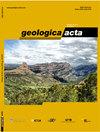伊朗中部Ardestan剖面锆石U-Pb地质年代和侵入岩侵位史
IF 2
4区 地球科学
Q2 GEOLOGY
引用次数: 36
摘要
乌鲁木齐-多赫塔尔岩浆弧(UDMA)是阿尔卑斯-喜马拉雅造山带的一部分,是与俯冲有关的安第斯型岩浆弧。沿此带出始新世火山岩和一些辉长岩-花岗岩体。研究岩体的主要岩石类型为花岗岩、花岗闪长岩和闪长岩。地球化学特征为镁质、钙碱性、铝质至微过铝质花岗岩和i型侵入岩,强富集大离子亲石(LIL)元素(如Rb、Ba、Sr),亏缺高场强度(HFS)元素(如Nb、Ti、P),为典型的俯冲相关岩浆。采用锆石U-Pb定年法确定了阿德斯坦地区不同侵入体的侵位年龄。其中Kuh-e Dom闪长岩年龄为53.9±0.4Ma;Kuh-e Dom花岗闪长岩年龄为51.10±0.4Ma;梅赫拉巴德花岗闪长岩年龄36.8±0.5Ma,纳斯兰德花岗闪长岩年龄36.5±0.5Ma,扎法尔干德花岗闪长岩年龄24.6±1.0Ma,费沙克花岗闪长岩年龄20.5±0.8Ma。这些结果更准确地描绘了下始新世至下中新世新特提斯俯冲和随后由阿拉伯-欧亚碰撞引起的扎格罗斯造山运动的岩浆演化。这些侵入岩在UDMA内的侵位与碰撞造山作用密切相关,是阿德斯坦地区从俯冲相关环境向碰撞后环境的过渡。本文章由计算机程序翻译,如有差异,请以英文原文为准。
Zircon U-Pb geochronology and emplacement history of intrusive rocks in the Ardestan section, central Iran
The Urumieh-Dokhtar Magmatic Arc (UDMA) is part of the Alpine–Himalayan orogenic belt and interpreted to be a subduction-related Andean-type magmatic arc. Along this belt, Eocene volcanics and some gabbroic to granitic bodies crop out. The main rock types of the studied intrusion are granite, granodiorite, and diorite. They have geochemical features typical of magnesian, calc-alkaline, metaluminous to slightly peraluminous granites and I-type intrusive rock that have a strong enrichment in Large-Ion Lithophile (LIL) elements (e.g. Rb, Ba, Sr), and a depletion in High Field Strength (HFS) elements (e.g. Nb, Ti, P), typical of subduction-related magmas. Zircon U-Pb dating was applied to determine the emplacement ages of the different intrusions in the Ardestan area. Among them the Kuh-e Dom diorite is 53.9±0.4Ma old; the Kuh-e Dom granodiorite is 51.10±0.4Ma old; the Mehrabad granodiorite is 36.8±0.5Ma old, the Nasrand granodiorite is 36.5±0.5Ma old, the Zafarghand granodiorite is 24.6±1.0Ma old, and the Feshark granodiorite is 20.5±0.8Ma old. These results delineate more accurately the magmatic evolution related to the Neotethyan subduction from the Lower Eocene to Lower Miocene, and the subsequent Zagros orogeny that resulted from the Arabia-Eurasia collision. The emplacement of these intrusive rocks inside the UDMA, which has a close relationship with the collisional orogeny, is transitional from a subduction-related setting to post-collisional setting in the Ardestan area.
求助全文
通过发布文献求助,成功后即可免费获取论文全文。
去求助
来源期刊

Geologica Acta
地学-地质学
CiteScore
2.50
自引率
6.70%
发文量
13
审稿时长
>12 weeks
期刊介绍:
- Relevant conceptual developments in any area of the Earth Sciences.
- Studies presenting regional synthesis.
- Thematic issues or monographic volumes presenting the results from one or more research groups.
- Short papers reflecting interesting results or works in progress.
- Contributions and results from Research Projects, Workshops, Symposiums, Congresses and any relevant scientific activity related to Earth Sciences.
- Geologica Acta aims to stimulate rapid diffusion of results and efficient exchange of ideas between the widespread communities of Earth Science researchers (with special emphasis on Latinamerica, the Caribbean, Europe, the Mediterranean
 求助内容:
求助内容: 应助结果提醒方式:
应助结果提醒方式:


